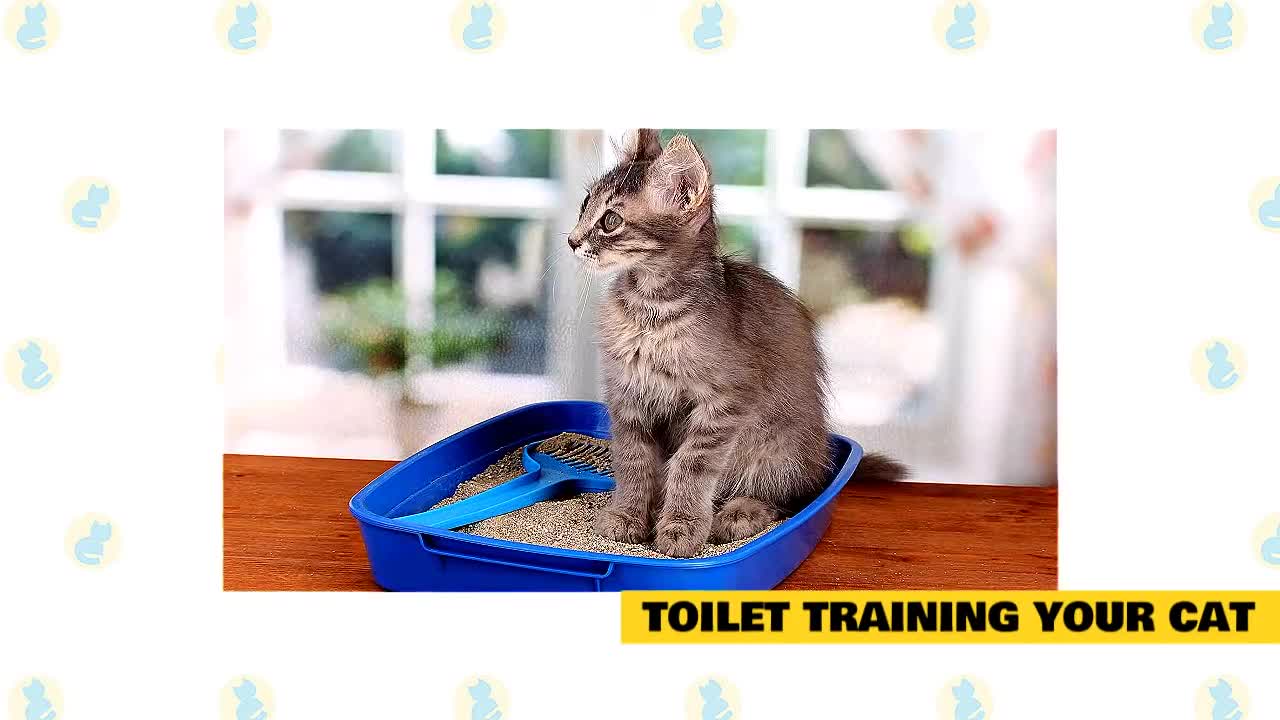Premium Only Content

Cats 101 : Basic Cat Training Tips
In today's video, we are going to talk about Basic Cat Training Tips.
The cat is a very independent animal, and many cat owners will tell you that it is this independence that makes the cat such a comfortable companion around the house. Cats are not as demanding of attention as dogs. And, unlike dogs, most cats don't make any particular effort to win your approval, they'll often wait for you to come to them rather than run around trying to catch your eye.
All this means that the cat is a very easy going creature who is polite and self-possessed. But it also means that it can be difficult to train a cat. If you and your cat don't see eye to eye over a certain kind of behavior, you might have a hard time getting him to do things your way. However, don't give up hope, it's not completely impossible to modify your cat's behavior.
Probably the very first training you’ll want to give your cat will be in using the litter box, for very obvious reasons.
Can a cat be trained? The answer is a resounding "Yes!", but it has to be done on feline terms. Everything in this video designed to help you see the world from your cat's perspective, which is an important key to training. You can train a cat to jump through hoops or roll over on command. However, a more valuable training goal is teaching him to stay within the boundaries of acceptable behavior in society.
Litter Box Training.
Training a cat to use a litter box usually isn’t difficult. Cats are generally clean by nature and have a natural inclination to bury their waste. Use these steps to train your cat to start using a litter box.
Place your cat and a clean litter box, the kind without a cover in a confined area, like a room in your house. Be sure your cat has plenty of food and clean water. If your cat ‘goes’ outside of the box, place the waste in the litter box.
Usually, within a day or two of being confined with the litter box, the cat will begin to use the box regularly. If the cat isn’t using the box within a couple of days, try this. After the cat has eaten, place the cat in the litter box and then just scratch the surface of the litter a bit with your fingertip.
If it’s still a no-go, make sure the box is clean. If it’s ever been used before, clean it with baking soda and fill it with clean litter. You can also try several types of litter, sometimes a cat will be fine with one brand and turn up its nose at another brand. Also make sure that the box is located in a quiet, secluded area.
If nothing seems to work, consult your vet. Occasionally an underlying medical problem can be the cause of a cat’s reluctance to use a litter box.
End furniture scratching.
Furniture scratching is a natural feline behavior. They scratch to condition their claws, get exercise, mark territory, and simply because it’s fun. Remember, screaming or hitting doesn’t work. Try these tips instead.
Trim your cat’s claws and re-channel energy toward a scratching post or a cardboard scratching pad. Praise your cat and give her a treat whenever you see her use the scratching post. Make your upholstered furniture less inviting by applying double-sided tape or spraying a cat repellent around the area where your cat scratches.
Behavior Training.
If your cat is doing some things that you’d really prefer it didn’t do, there’s a good chance that you can train that bad behavior away. But first, try to understand why the cat is behaving that way. There’s a reason, and from the cat’s perspective, of course, the behavior is perfectly reasonable.
If the cat is clawing your furniture, for example, it’s driven by instinct to do that. It needs to claw something, it’s a survival instinct. Doesn’t have to be your furniture, but something. So there’s not much chance of getting your cat to stop clawing. But you can train the cat to focus its clawing instinct on acceptable objects, like scratching posts.
Train your cat to behave appropriately by using positive reinforcement, not punishment. Don't hit the cat when it scratches the furniture.
Cat Scratching Post.
Spend time near the post encouraging your cat to interact with it. Play with the cat near the post and incorporate it into your play. The most important step is to reward the cat every time your cat uses the post. Have yummy food treats nearby and give one to the cat whenever you see his scratching the post. Once your cat is using the scratching post you have provided, you can teach him or her that other things are off-limits.
Copyright Disclaimer:
We respect the copyright interests of the individual owners in the video and don't claim to own the original photos.
-
 LIVE
LIVE
tacetmort3m
1 day ago🔴 LIVE - BECOMING THE UNTOUCHABLE (RADIATION WHO?) - STALKER 2 - PART 3
587 watching -
 16:05
16:05
China Uncensored
14 hours agoAnother Car-Ramming Strikes Outside a Chinese School!
4.62K11 -
 9:26
9:26
Dr. Nick Zyrowski
6 hours agoAnti Inflammatory Foods | You MUST Eat These!
2.75K1 -
 15:40
15:40
Bearing
1 hour agoEnd Stage Trump Derangement | Rosie O'Donnell is NOT Doing Well 😬
1.74K19 -
 35:19
35:19
hickok45
4 hours agoSunday Shoot-a-Round # 256
6.08K10 -
 41:20
41:20
PMG
16 hours ago $0.39 earned"The No B.S. Guide to Getting Your Life together in 2024!"
4.14K -
 14:22
14:22
Forrest Galante
16 hours agoDoes The Megalodon Still Exist?
97.4K28 -
 26:48
26:48
Stephen Gardner
11 hours ago🔥BREAKING: Vladimir Putin JUST shocked NATO | Will only negotiate with Trump!
140K319 -
 2:45:39
2:45:39
Tundra Tactical
14 hours ago $36.49 earnedTundra Nation Live : The Worlds Okayest Gun Live Stream
71.8K2 -
 17:06
17:06
Professor Nez
11 hours ago🚨BREAKING: Elon Musk to BUY MSNBC!? Dems STUNNED by Brian Williams’ Viral Video!
65.1K84